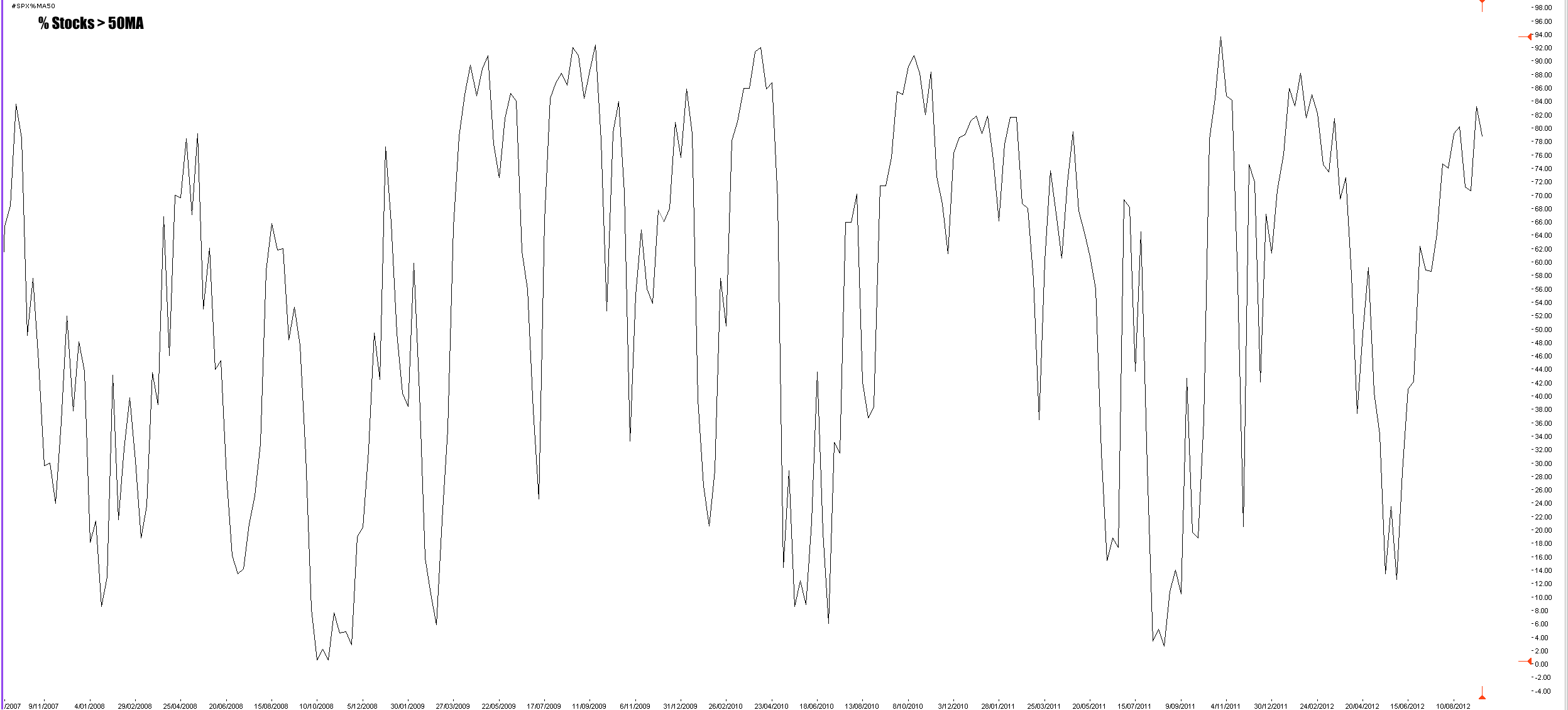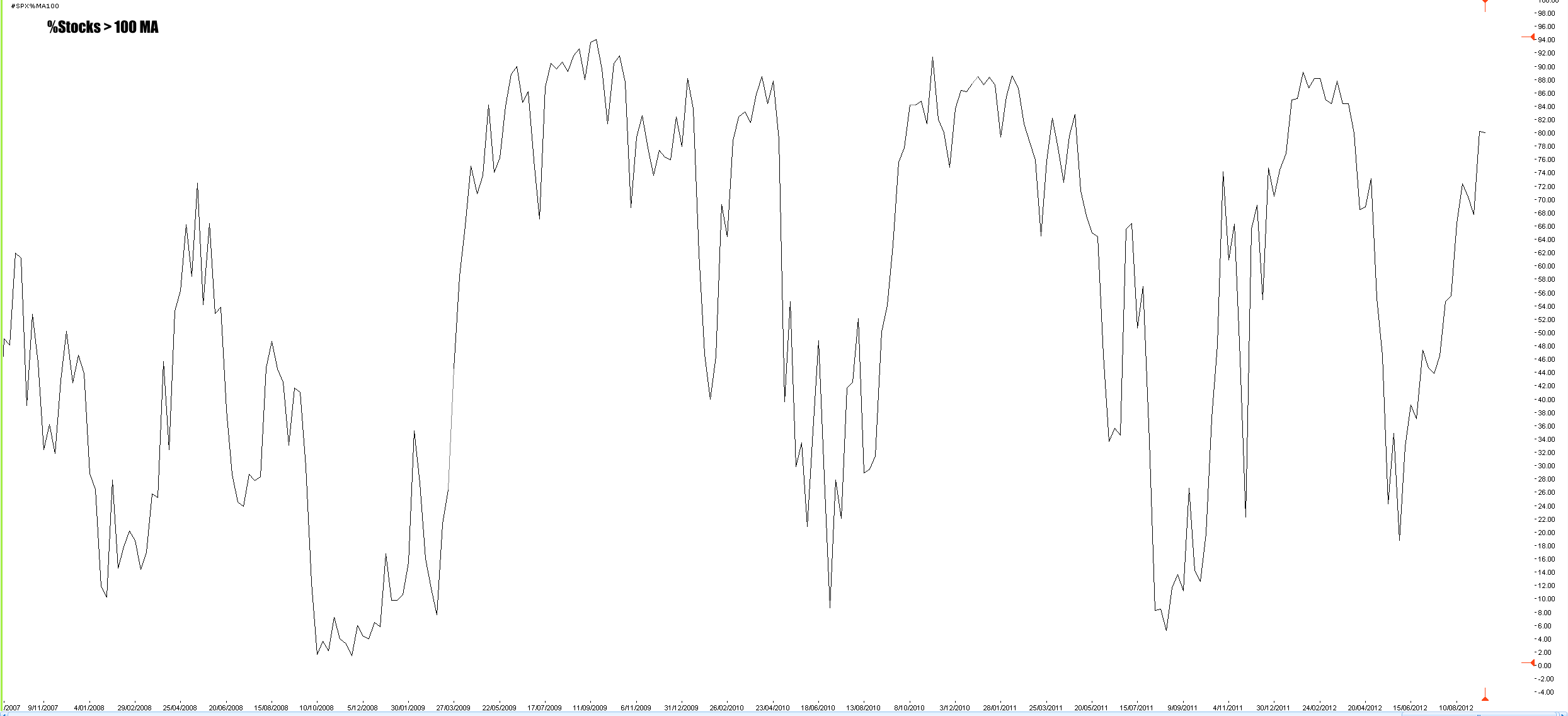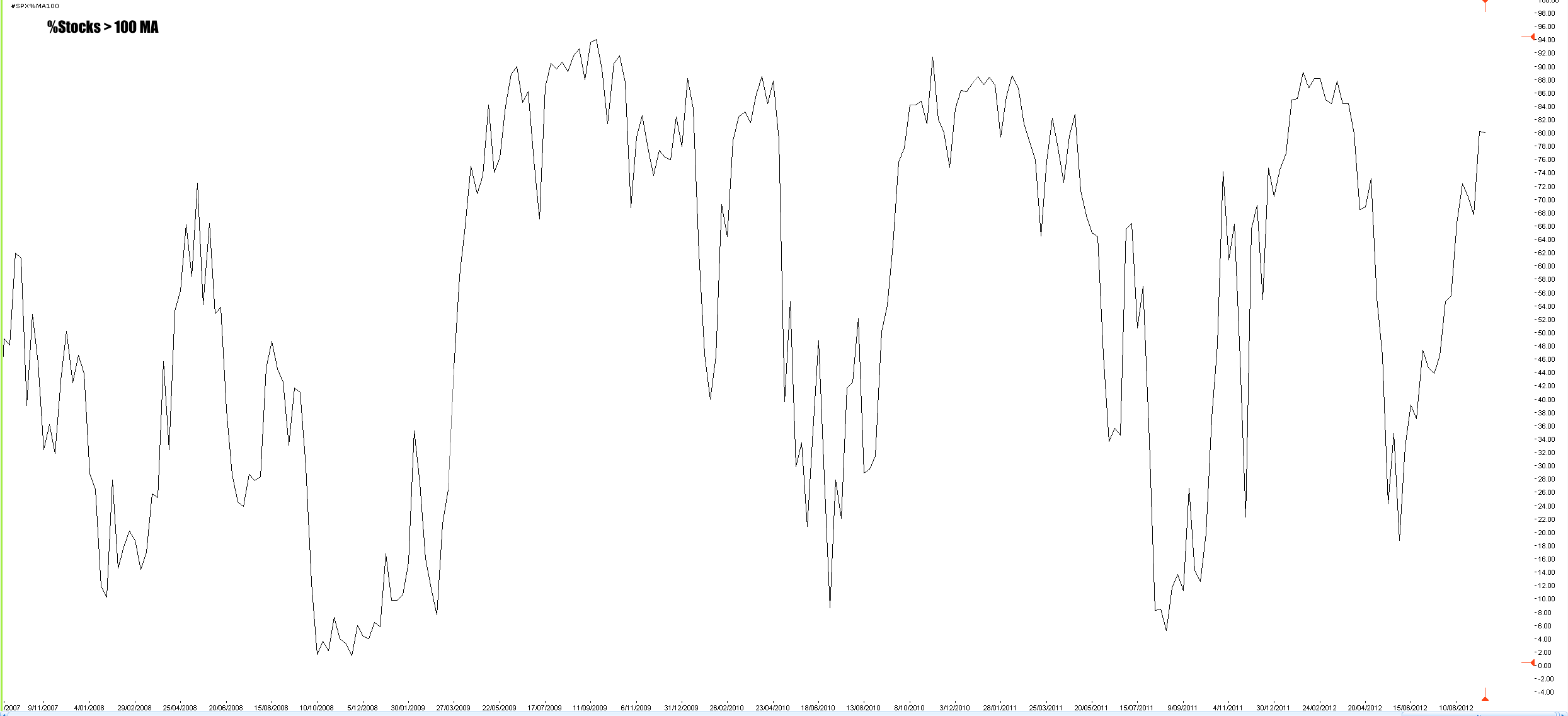In the little excursion I had into the notion of the market being overvalued I visited the idea of the percentage of stocks above certain moving average being a sign of the market being overheated. The thinking behind this is that if a substantial number of stocks are above a given moving average then this indicates a segment of the market is “overvalued” since it is a bad thing for all stocks to be in long term uptrends. To be honest this is a notion I have always struggled with.
I thought I would look at the current situation on the S&P500 by looking at the percentage of stocks that are above their 20 week ma, 50 week ma, 100 week ma and 200 week ma. I have chosen weekly ma’s rather than daily because I want to eliminate as much noise as possible from the analysis.
The cornerstone of any analysis I perform is based upon the simple mantra of does what I am looking at convey the information I need to know and does what I am seeing add to the decision making process or does it simply muddy the waters. The charts continuing the 20 ma and 50 ma fail this task because they dont eliminate noise form the decision making process – from my perspective they add noise to the trading decision so I would ignore these completely. The 100 ma and 200 ma seem to convey information without confusing the issue – if i were using this tool I would be looking for long term changes in the market, so my analysis would focus on either of these two.
However, the central tenet of using such a tool is that it in some way conveys information that is not readily available in a simpler form and to my eye they add nothing to the decision making process that cannot be got from looking at tools such as cumulative advance decline lines. The siren call of such tools is that they add to your own internal story. For example someone may look at 100% stocks being above their ma as being a sign of an overheated mated whereas someone else will see it as a sign of a market that is simply trending strongly. My feeling is that tools that create the possibility for a narrative are probably best avoided simply because of their ambiguity and this ambiguity enables you to impose your won bias.











interesting observations – but this data seems to stop in 2012?
Would be interesting to see against the $XAO and A-D which always seems to go down?